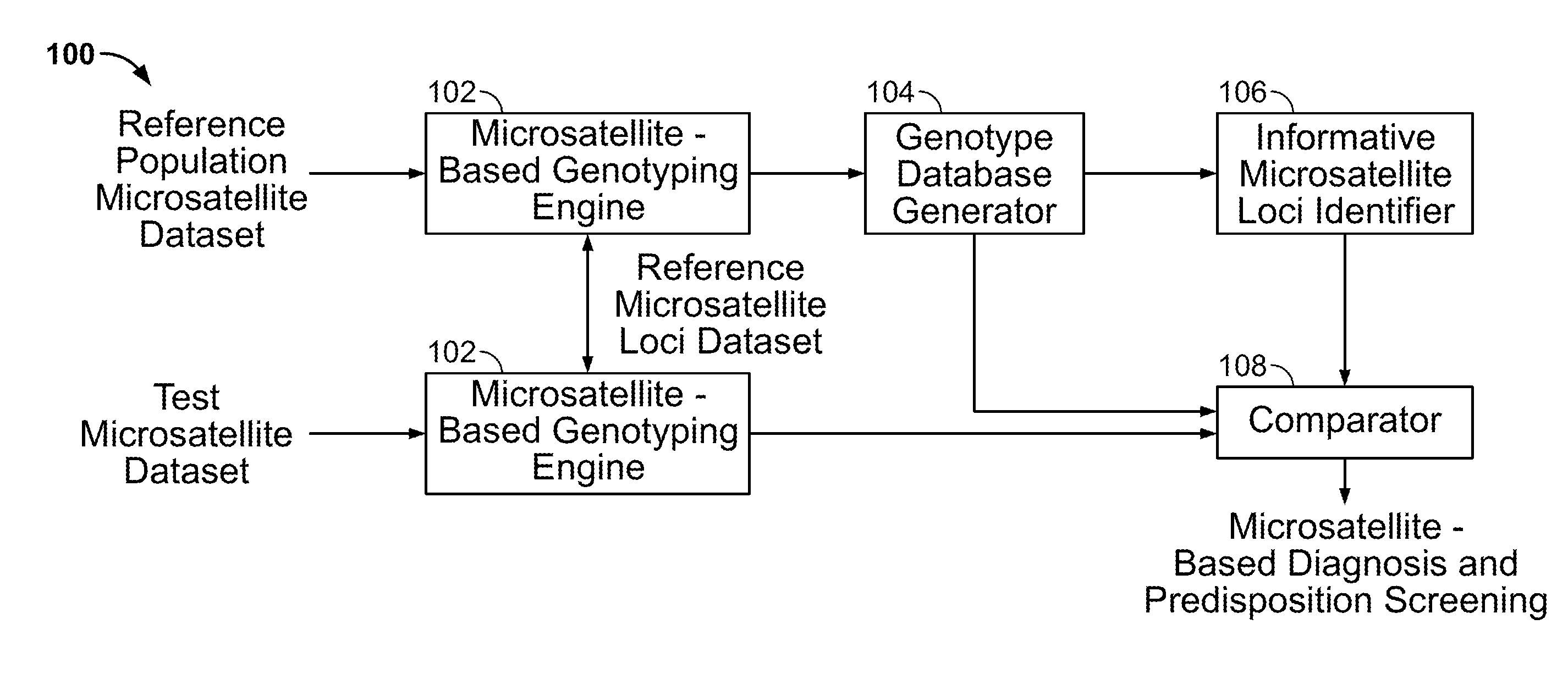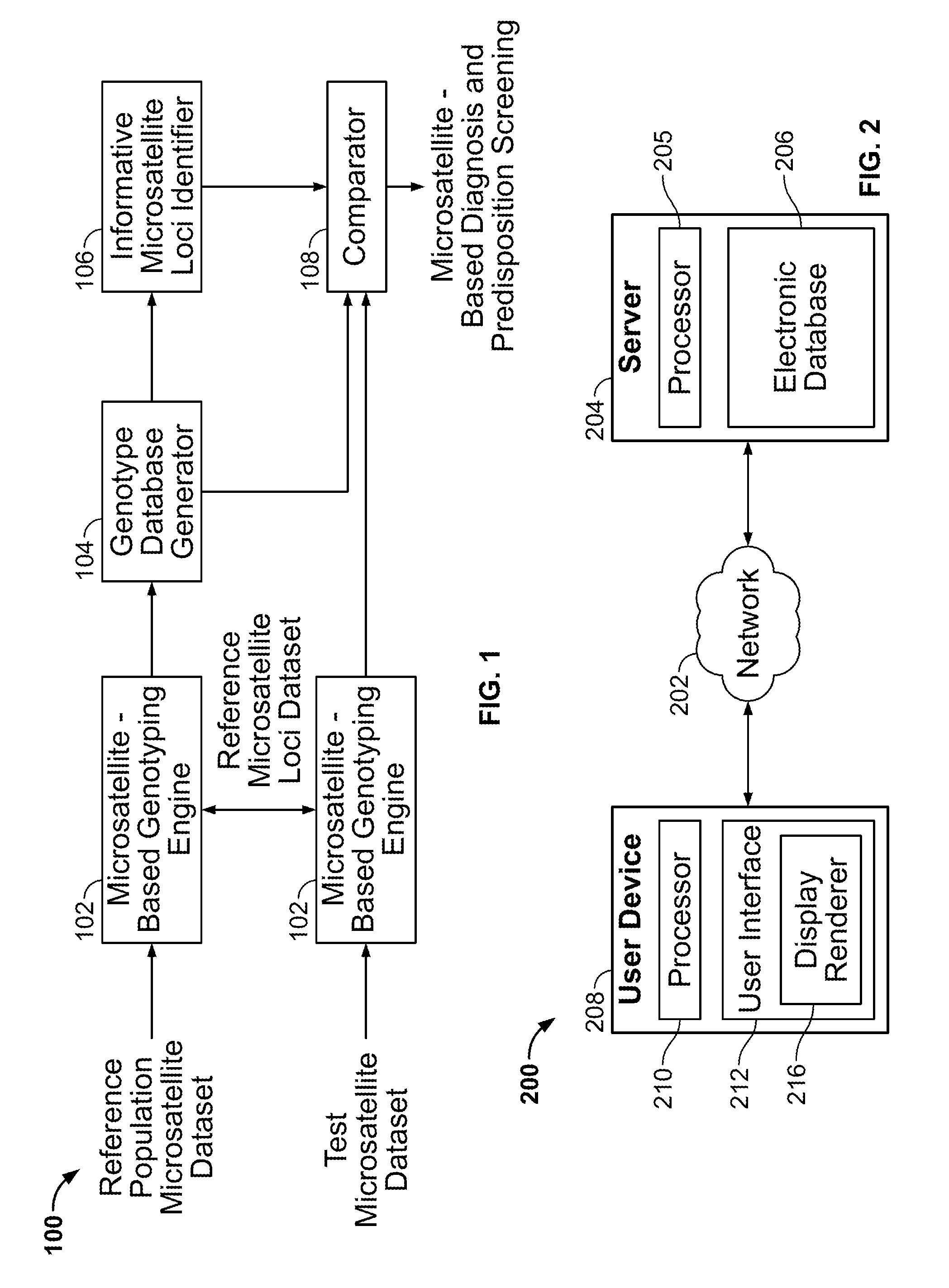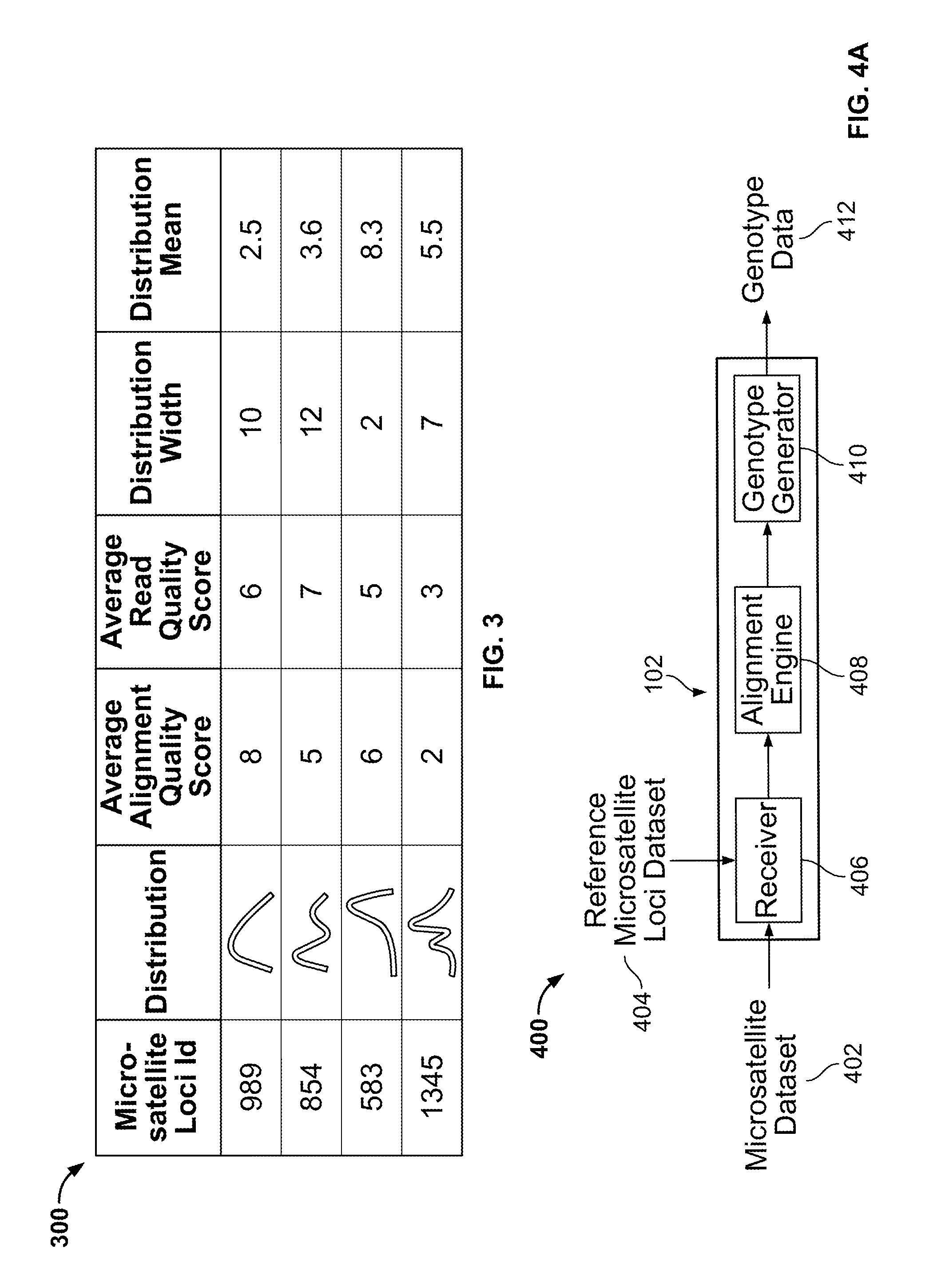Methods and Compositions for Identifying Global Microsatellite Instability and for Characterizing Informative Microsatellite Loci
a global microsatellite and instability technology, applied in the field of methods and compositions for identifying global microsatellite instability and characterizing informative microsatellite loci, can solve the problems of difficult mass analysis and high polymorphic nature of microsatellites
- Summary
- Abstract
- Description
- Claims
- Application Information
AI Technical Summary
Benefits of technology
Problems solved by technology
Method used
Image
Examples
example 1
Global Microsatellite Instability and Identification of Informative Microsatellite
Loci: Breast Cancer
Methods
[0328]Identifying Microsatellites.
[0329]Using Tandem Repeats Finder (Benson, G. Tandem repeats finder: a program to analyze DNA sequences. Nucleic acids research 27, 573-580 (1999)), over a million microsatellites in the human genome (NCBI36 / hg18) were identified with the following parameters: matching weight=2, mismatching penalty=5, indel penalty=5, match probability=80, indel probability=10, minimum alignment score to report=14, maximum period size to report=4 and 6. All monomers, microsatellite loci in or near large repetitive elements, as found using RepeatMasker (Smit A F A, H. R., Green P. RepeatMasker Open-3.0, (1996-2012)), and microsatellites with non-unique flanking sequences were removed from this set, resulting in a subset of 744,618 microsatellite loci. Microsatellites were associated with their corresponding location in or near Refseq genes using the UCSC Genom...
example 2
Global Microsatellite Instability and Identification of Informative Loci: Ovarian Cancer
Methods
[0358]Data Sets.
[0359]The set of 250 genomes used to develop a set of normal microsatellite distributions were sequenced by the 1000 Genomes Project (R. M. Durbin et al., Nature 467, 1061 (Oct. 28, 2010)). These individuals were whole genome sequenced at low coverage and exome sequenced at high coverage. Samples from individuals with ovarian cancer were sequenced by The Cancer Genome Atlas for study phs000178.v5.p5 (Nature 474, 609 (Jun. 30, 2011)). The majority of the samples were exome sequenced. The raw sequencing reads obtained for this study through NCBI SRA were downloaded, decrypted, and decompressed using software by NCBI SRA. Then they were filtered based on the quality score requirements set forth by the 1000 Genomes Project (R. M. Durbin et al., Nature 467, 1061 (Oct. 28, 2010)).
[0360]Identifying Microsatellites.
[0361]Microsatellites at least 10 base pairs long, with no more tha...
example 3
Global Microsatellite Instability and Identification of Informative Loci: Glioblastoma
[0383]Glioblastoma sequencing data was downloaded from The Cancer Genome Atlas and used to identify loci near and / or in genes that show changes in microsatellite length when compared with the consensus from the 1000 Genomes Project (1 kGP). A microsatellite genotype was reliably called at every repeat-containing locus in each sample which had sufficient depth and quality at 1000-10,000 of these loci to establish a basal level of GMI. A profile or distribution of alleles was then computed at each locus. Profiles generated for cancer and cancer-free samples at each locus were compared to identify those loci which exhibited significant levels of variation in cancer samples yet were conserved in cancer-free samples. These loci and the genes containing them were further analyzed to better understand their possible role in cancer etiology and to evaluate their potential as risk measures, possible therape...
PUM
| Property | Measurement | Unit |
|---|---|---|
| length | aaaaa | aaaaa |
| sequence length | aaaaa | aaaaa |
| sequence lengths | aaaaa | aaaaa |
Abstract
Description
Claims
Application Information
 Login to View More
Login to View More - R&D
- Intellectual Property
- Life Sciences
- Materials
- Tech Scout
- Unparalleled Data Quality
- Higher Quality Content
- 60% Fewer Hallucinations
Browse by: Latest US Patents, China's latest patents, Technical Efficacy Thesaurus, Application Domain, Technology Topic, Popular Technical Reports.
© 2025 PatSnap. All rights reserved.Legal|Privacy policy|Modern Slavery Act Transparency Statement|Sitemap|About US| Contact US: help@patsnap.com



